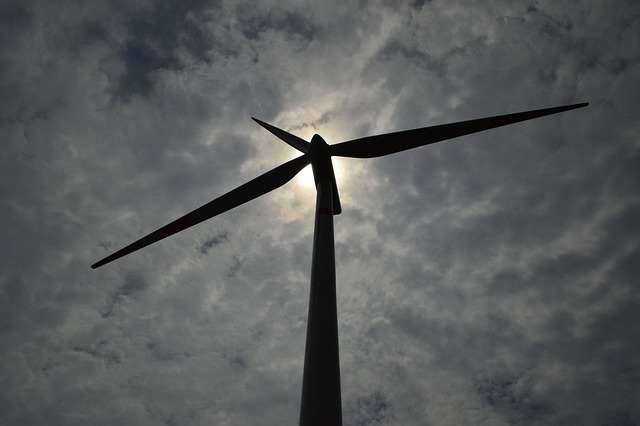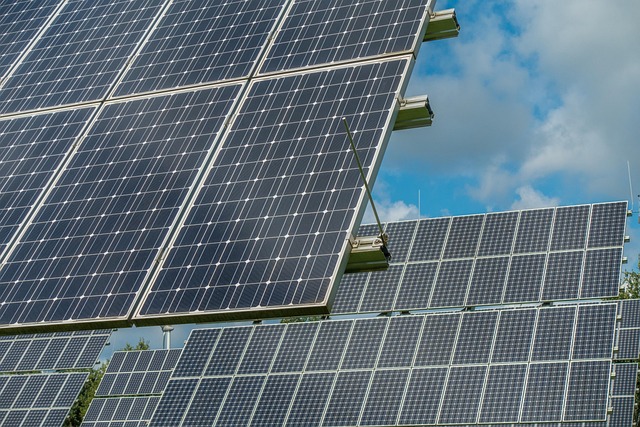Beyond Fossil Fuels: The Shift Towards Renewable Power
The world is at a critical juncture in its energy landscape. As billions of people continue to deplete fossil fuels at an unprecedented rate, it has become clear that these resources will not sustain us indefinitely. The consequences of fossil fuel consumption are profound—climate change, air pollution, and environmental degradation are merely a few of the detrimental effects. The urgency for a transition to renewable energy sources has never been more palpable.
The Crux of the Problem: Fossil Fuels
For over a century, fossil fuels—coal, oil, and natural gas—have been the cornerstone of energy generation. They have powered industrial economies and fueled rising standards of living across the globe. However, the carbon emissions resulting from burning these fuels are the primary driver of climate change. The Intergovernmental Panel on Climate Change (IPCC) has issued repeated warnings about the dire consequences of global warming, urging for sweeping changes to our energy systems.
In addition to their environmental impact, fossil fuels are also subject to geopolitical tensions and market fluctuations that can destabilize economies. Countries rich in oil and gas have seen fortunes rise and fall based on global demand and price volatility, highlighting the fragility of dependence on these resources.
Understanding Renewable Energy
Renewable energy refers to energy derived from resources that are naturally replenished on a human timescale. This includes sunlight, wind, rain, tides, waves, and geothermal heat. Unlike fossil fuels, renewable sources generate energy without depleting resources or emitting greenhouse gases, helping to mitigate climate change.
Key types of renewable energy include:
- Solar Energy: Harnessed from sunlight using solar panels or photovoltaic cells, solar energy can power homes, businesses, and even entire communities.
- Wind Energy: Wind turbines convert the kinetic energy of wind into electricity, and are often found in large wind farms located in open areas to take advantage of strong winds.
- Hydropower: Produced by the flow of water in rivers or through dams, hydropower is one of the oldest forms of renewable energy, providing a stable and controllable source of electricity.
- Geothermal Energy: This energy comes from the Earth’s internal heat, harnessed for electricity generation and direct-use applications such as heating buildings.
- Biomass: Organic materials, such as wood, agricultural crops, and waste, can be used to produce heat, electricity, or biofuels.
The Economic Case for Renewables
Transitioning to renewable energy sources is not just an environmental imperative; it also presents significant economic opportunities. The renewable energy sector is among the fastest-growing industries globally, creating millions of jobs in manufacturing, installation, and maintenance.
Investing in renewable technologies has proven to be cost-effective. The costs of solar panels and wind turbines have dropped dramatically over the last decade. According to the International Renewable Energy Agency (IRENA), solar energy has become one of the least expensive sources of electricity generation in many parts of the world. These trends indicate that even without subsidies, renewable energy can compete with conventional fossil fuel sources.
Moreover, as countries commit to ambitious climate goals, such as the Paris Agreement, investments in renewables are set to increase. Industries that pivot swiftly to renewables can gain a competitive edge, attracting eco-conscious consumers and investors alike.
Technological Advances: Shaping the Future
Technological innovation is a cornerstone of the renewable energy revolution. Advances in energy storage, grid management, and energy efficiency are dramatically transforming the landscape of how we produce, distribute, and consume energy.
Energy Storage Solutions
One of the predominant challenges for renewables lies in their intermittency. Solar and wind energy production fluctuates based on weather and time of day. Energy storage systems, particularly batteries, are crucial for balancing supply and demand. Technologies such as lithium-ion batteries have seen significant improvement in energy density, efficiency, and cost reduction, allowing them to store energy for use when generation exceeds demand.
Smart Grids
Smart grid technologies facilitate better management of electricity supply and demand. By using digital communication tools, these grids can dynamically respond to changes in consumption and generation, optimizing the use of renewable resources. Smart grids contribute to enhanced reliability and efficiency, ultimately leading to a more resilient energy system.
Decentralized Energy Systems
The rise of decentralized energy systems represents a significant shift in energy production. Small-scale solar installations, community wind projects, and microgrids allow local entities—including businesses and neighborhoods—to produce their own power. This decentralization empowers communities and reduces reliance on large-scale, centralized fossil fuel plants.
Challenges in the Transition
While the transition to renewable energy appears promising, it is not without challenges. There are economic, political, and social hurdles that pose obstacles to a complete shift away from fossil fuels.
Policy and Regulation
The role of government in facilitating or hindering the renewable energy transition is vital. Policies that support renewables—through incentives, tax credits, or direct investment in infrastructure—can accelerate the growth of the sector. However, political resistance fueled by established fossil fuel interests can impede this progress. In addition, inconsistent regulatory frameworks can create uncertainty for investors.
Infrastructure and Grid Integration
Many countries’ existing infrastructure was designed to support fossil fuel energy generation. Upgrading transmission lines and grid systems to accommodate renewables requires substantial investments. Moreover, existing energy markets must adapt to handle a higher share of renewables, ensuring that they function effectively even during periods of low generation.
Public Perception and Acceptance
Cultural attitudes towards renewable energy can vary dramatically. Some communities may resist the installation of wind farms or solar projects due to concerns about aesthetics, property values, or environmental impacts. Therefore, stakeholder engagement and education are essential to foster acceptance and support for renewable projects.
Global Initiatives and Success Stories
In the global energy transition narrative, several countries and regions have emerged as leaders in renewable energy adoption. Nations like Denmark, Germany, and China are making remarkable strides by investing heavily in renewables and setting ambitious climate targets.
Denmark stands out for its substantial investment in wind energy, generating nearly 47% of its electricity from wind turbines. This commitment has made Denmark a pioneer in renewable energy, setting an example for the world and inspiring other countries to follow suit.
Germany’s “Energiewende” (energy transition) is another critical initiative aimed at moving the nation away from fossil fuels towards a sustainable energy system. Germany has seen leaps in solar energy production, with policies supporting renewables driving a significant reduction in emissions.
China, now the world’s largest producer of solar panels and wind turbines, has made immense investments in renewable technologies. The country is not only focused on domestic power generation but also aims to become a global leader in renewable technology exports.
The Role of Individuals and Communities
While government policies and corporate strategies play an essential role in the renewable energy transition, individuals and communities are equally important. The choices made at the grassroots level can significantly impact energy consumption patterns.
Adopting renewable energy technologies, such as solar panels for homes, electric vehicles, and energy-efficient appliances, can reduce personal carbon footprints. Community-driven initiatives like local solar cooperatives and energy efficiency projects empower residents to contribute actively to the transition.
The Path Forward: Vision for a Renewable Future
The vision for a future beyond fossil fuels is one where clean, sustainable energy powers our lives, economies, and infrastructures. This shift is not simply an energy transition; it’s a fundamental transformation of our social and economic systems. In this future, energy will be abundant, accessible, and most importantly, environmentally sustainable.
Achieving this vision will require collaboration across all sectors—government, industry, civil society, and individuals. By embracing innovation, implementing supportive policies, investing in clean technologies, and fostering public engagement, we can chart a course towards a world free from the constraints of fossil fuels.
As we navigate this transition, the importance of resilience in our energy systems cannot be overstated. The global climate crisis challenges us to rethink our relationship with energy and the resources we depend on. The commitment to renewable power represents not only an opportunity but a necessity—one that ensures a sustainable, equitable, and prosperous future for generations to come.
Conclusion
The shift towards renewable power is not inevitable, but it is essential. As the world grapples with the consequences of fossil fuel reliance, the urgency to transition is clear. By harnessing the power of renewables, we can create a sustainable energy future that fuels economic growth while safeguarding our planet. The journey may be fraught with challenges, but with concerted effort, commitment, and innovation, we can transcend fossil fuels and embrace a new era of clean energy.



